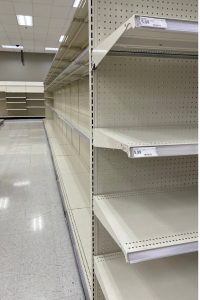The restaurant industry is under pressure. The supply chain crisis has caused a shortage of ingredients, and restaurants struggle to adapt. As a result, some restaurants have been forced to close their doors, while others find creative ways to keep their businesses afloat. This blog post will look at how restaurants have been affected by the supply chain crisis and how they have adapted to survive.
Supply Chain Crisis
According to Forbes, as more independent and franchised quick service restaurants, fast casual, and full-service restaurants reopen to total capacity, supply chain concerns and problems have become more challenging for industry business owners, dealers, and operators. Many are still only running at 50% or less. The challenges and obstacles faced by restaurants have included:
- Obtaining necessary ingredients
- Maintaining a consistent supply of food
- Keeping up with customer demand
Creative Solutions
Restaurants need to be creative and resourceful to stay afloat during these difficult times. According to an article in BDO International, below are some ways restaurants have adapted to the supply chain crisis:
- Partnerships, ghost kitchens, and better supply and demand forecasts have all been used by several restaurants as solutions. By balancing costs, leveling staff burden, enhancing employee retention, and combining resources, partnerships can help supply chains decrease risk and mitigate pressures.
- Ordering non-perishable food and supplies in bulk and ordering locally can assist save lead times and ensuring that crucial ingredients are available.
- As restaurants relied on delivery and carryout services to compensate for lost foot traffic revenue during the pandemic, ghost kitchens became increasingly popular. Ghost kitchens enable scalable supply chain and order management efficiencies by allowing variable ordering, food manufacturing, and delivery alternatives.
Final Thoughts
Restaurants are finding new and innovative ways to stay afloat during these difficult times. While the solutions mentioned in this blog post may not work for every establishment, they provide a snapshot of how restaurants adapt to survive. So, if you are a restaurant owner or manager, fight back by being creative and resourceful for your food supply! Applying these changes can help ensure that your restaurant remains open and serves delicious food during these challenging times.
How has your restaurant adapted to the supply chain crisis? Let us know in the comments below!
For more tips, check out our blog on The Effects of Transaction Costs on Restaurant Supply Chains.









One Response